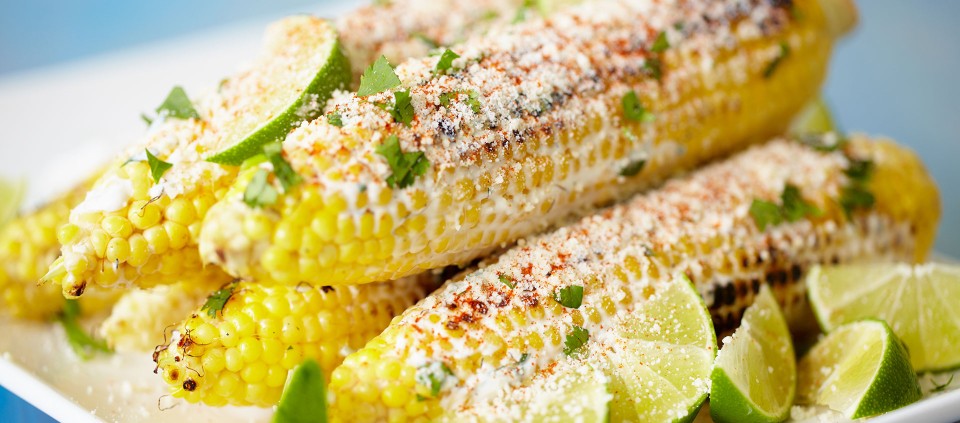The Top Food and Nutrition Trends for 2020

The ebb and flow of what’s popular in the world of food is a mirror (a skewed funhouse mirror, granted) into what we collectively seek in any given moment. Not so much to eat, but what to be. We're a fickle lot, we American foodies, always in search of the newest thing; if only we could be a bit more like our stable European brothers and sisters, who obsess instead about the latest vintages of fine wine and where the truffles are growing this year, perhaps we’d finally be sated.
However, there’s lots of good news in food, as the impact of yoga and Ayurveda on our food supply continues to grow. Perhaps it’s that yoga-trained people are making their way to the boardroom and decision-making roles in the food industry, or maybe we’ve reached a tipping point where yoga practitioners are a significant market segment. Here are a few trends that I predict will continue to unfold.
We’re getting (more) serious about sustainable nutrition.
For the first time, agriculture got a front-row seat at the global discussion around climate change in Paris (with the United States noticeably absent). Several initiatives unfolded at the same time, with various linkages of food, agriculture, and climate discussions. The consumption of meat was a controversial subject; vegan diets are on the rise, and are clearly the most sustainable and can be among the healthiest, when done thoughtfully. (If you’re not up for going cold turkey, so to speak, experts recommend simply taking your next step toward a more whole-foods, plant-based diet.)
In addition to sustainability, regenerative agriculture (farming that improves the soil) is a hot topic, and small food companies and advocacy groups are focused on new ways of raising our food in balance with nature. There are more “values eaters”—those willing to pay more to have food re-approximate the elegant web of plants feeding animals feeding plants that used to be the dominant flow. If we can turn the clock back by improving the soil with food we raise, even better.
Sustainability feeds the craze for Impossible and Beyond Meat plant-meat blends that are allegedly delicious and absolutely everywhere. Overall, this trend is good news for the environment—no matter how you slice it or fry it, animal meat has a higher carbon footprint than plant protein. But are these meat subs really better for you than the real thing? To answer that question, look at the number and quality of ingredients in each product.
We’re getting (more) serious about malnutrition, here and abroad.
Malnutrition (over- and under-nutrition) is the leading cause of poor health globally, and the solutions are there, we just need action at scale. Obesity, undernutrition, and climate change are three epidemics unfolding at the same time, which increasingly interact. Work on one with a bit of thoughtfulness, and the others improve. National organizations like the Academy of Nutrition & Dietetics, the World Health Organization, and other organizations have defined malnutrition’s clear climate impacts.
How can you personally address malnutrition? One: Take that next step toward a whole-foods, plant-based diet. Two, eat and prep your food mindfully. Three, learn more about your local food system. When our diets are filled with nutrient-dense plants and we eat a little more slowly and mindfully (most of the time), it tends to be great for the planet in terms of carbon footprint, as well as for our own bodies. When your food is raised locally, the energy used to transport it is saved, and the food tends to be more whole and healthy. Reaching out to your local farmer’s market is a great way to learn about how to get involved.
Keto (now 2.0) isn’t going anywhere, but genetic and functional nutrition are.
Now that keto has swept the Twitterverse and the processed food industry is in the act, look for it to grow. A collection of keto-lectuals have been brainstorming the many drawbacks of the diet, and offer a higher-fiber, healthier-fat approach. It's all about just how much you love carbs. For me, the love is great, so even Keto 2.0 will have to wait.
It is the era of genetic nutrition, but we don’t yet have inexpensive testing for nutritional genetics. Once we all get our genetic nutrition profiles, we won’t have to have all these diet trends. It will be clear to you how you need to eat and what vitamins and minerals you need to address your health propensities. Kripalu has been hep for a while to functional nutrition, wherein you can assess your nutritional status at the cellular level, and address core imbalances to tackle symptoms at the root. Now everyone else is catching on.
Another trend this year is the distinction between processed foods that support a healthy diet (canned tomatoes or beans, for example) and ultra-processed foods that do not (fast-food meals and the like). While it's great to eat as much whole food as possible, some canned and frozen foods can help us take the next step toward a diet that's more in balance.
A Few Food Trends to Note
What’s this year’s stretchy vegan cheese, or food-with-a-cause in cute packaging? Here are a few contenders:
- Street corn (elote)—corn on the cob rolled in lime, spices, and cheese
- Oat milk, great for drinking and baking
- African flavors—peanuts, tomato, spices
- Zero-proof cocktails.
Let’s raise a glass from that last category, and toast to enhancing our individual and global health in 2020!
Annie B. Kay, MS, RDN, E-RYT 500, C-IAYT, is an author, nutritionist, Kripalu faculty member, and important voice in whole-foods nutrition and yoga.
Full Bio and Programs